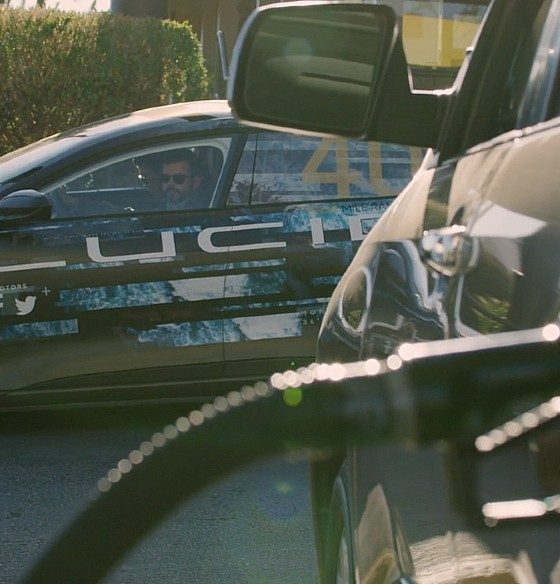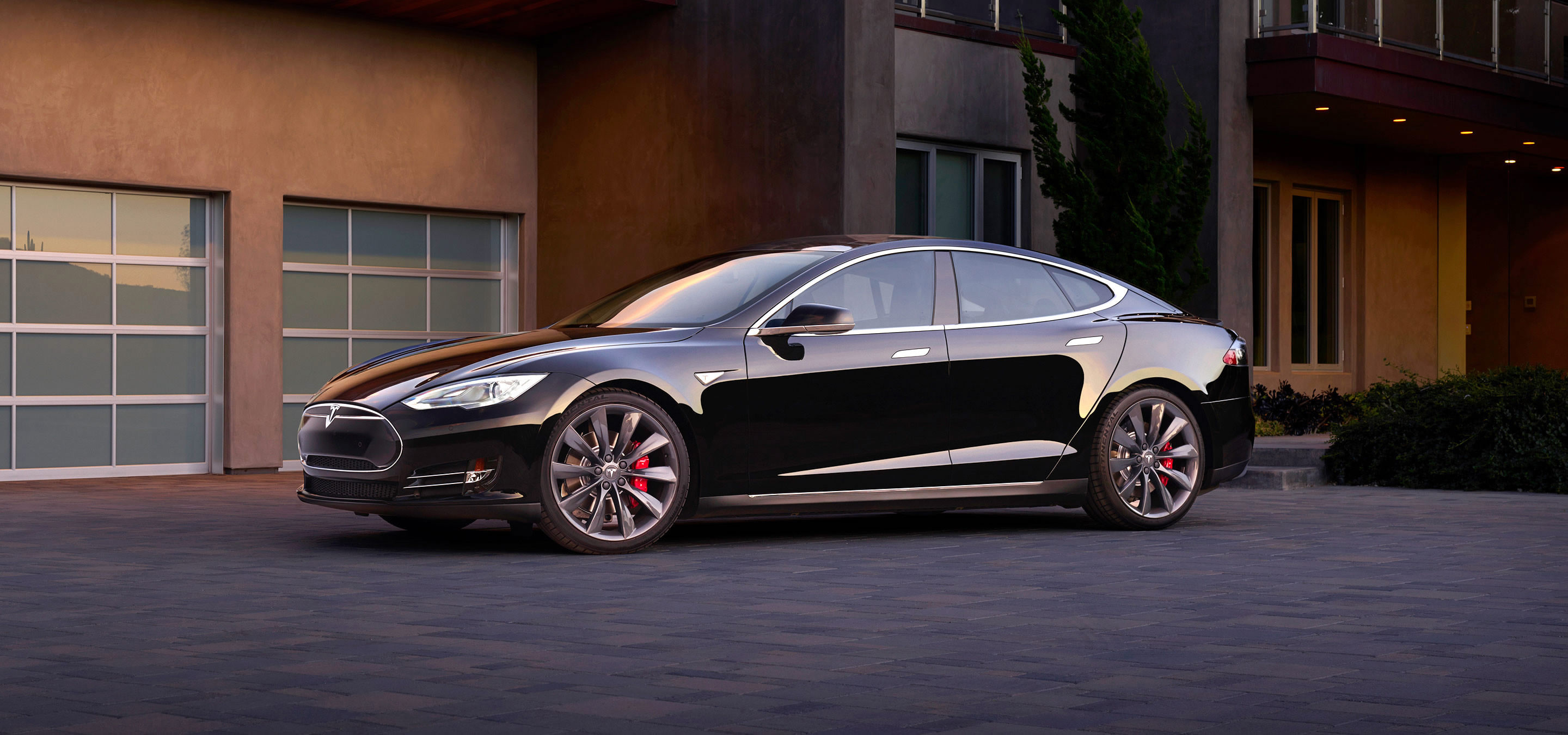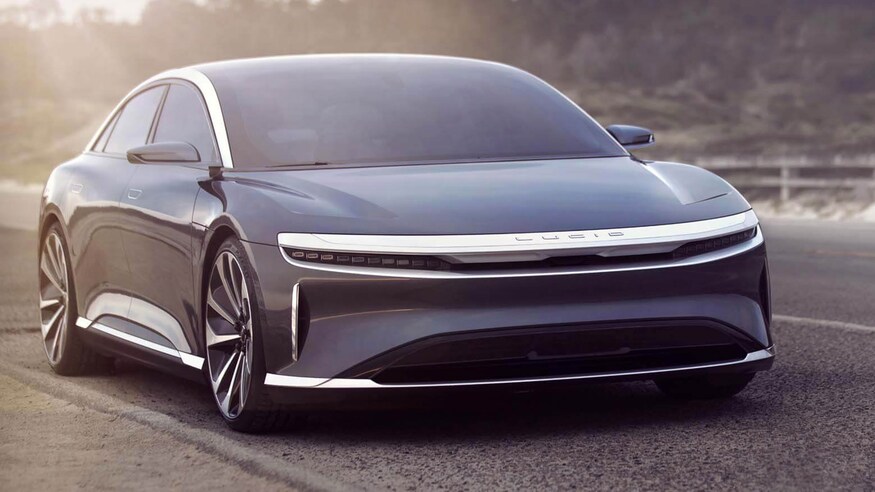

News
Lucid CEO and former Model S designer throws shade at Tesla fans, likens group to ‘old petrol fanboys’
When Peter Rawlinson left Tesla in 2012 just before the Model S launched, he probably did not think that his former employer would one day end up becoming the leading force in the electric vehicle industry.
Now the CEO and CTO of Lucid Motors, Rawlinson is gunning for Tesla’s title as the supreme EV maker. He believes the company’s first sedan, called the “Air,” has all the potential to help Lucid overtake Tesla, effectively silencing the “fanboys,” a group of enthusiasts who are widely supportive of the electric car maker and its CEO, Elon Musk.
Peter Rawlinson spent his illustrious automotive sector career at Jaguar and Lotus before joining Tesla in 2008. He left Elon Musk’s Model S engineering team in 2012 and joined Atieva, now Lucid Motors, in 2013 as the Chief Technology Officer. He still holds that title, but another accompanies it as of April 2019: Chief Executive Officer.
In a recent interview with Motortrend, Rawlinson talked about his company’s technology that he believes will pass Tesla, the “fanboys” of Elon Musk’s company, and why the success of the Model S is, at least in part, because of him.

Lucid unveiled the Air in December 2016. Lucid and Rawlinson both claim the vehicle will be capable of 1,000 horsepower and 400 miles of range per charge. While a prototype of the Air managed to prove its range is for real, the horsepower claim is still untested, and Rawlinson knows the doubters still exist. “When I claimed that we would have a 1,000-hp car, or have over 400 miles of EPA five-cycle range, nobody believed it,” he said to MotorTrend’s Kim Reynolds.
His claims do not stop there, however. Rawlinson says the Air will be better than the Model S in every way possible as it equips a power unit capable of more power density than Tesla’s most powerful vehicles. “We’ve got 16.7 kW-per-liter [power density] in our power unit. No one has done that. Tesla hasn’t done that,” he said.
Rawlinson certainly seems like he is motivated by those who speak about Lucid in a bad light, and it is all too familiar for him. “Now I’m having a sense of déjà vu, with history repeating itself,” he says. “Lucid is being put down by Tesla fans. Those old petrol fanboys are the current Tesla fanboys. Very similar rhetoric.”
However, Rawlinson’s rhetoric about his former employer isn’t squeaky clean, either. In 2019, he stated Tesla is not a real luxury brand. “You only have to get inside a Tesla to recognize it’s not really a luxury car. It’s a premium car but not true luxury,” he said.

Perhaps this is why Tesla “fanboys” have been critical of Rawlinson’s new project. Tesla CEO Elon Musk has always said that its competitors are never going to be companies with the same sustainable mission. The companies that are looking to advance petrol-based technology are the real enemy. While there are Tesla fans who are competitive, many are embracing the transition to electrification as a positive thing. Perhaps it is not about the cars at all, but what Rawlinson has said about Tesla in the past.
Additionally, during the interview, Rawlinson says his influence is the reason for the Model S’ success in the electric industry. “Model S was actually styled before I joined Tesla. My task was to retrospectively fit all the bits into it. It was a pretty interesting intellectual puzzle to design a car from the inside out,” he says.
Later in the interview, Rawlinson goes on to say that his thirst for perfection was the reason the Model S became such a successful vehicle. His constant nit-picks and desire to do better drove Tesla’s first sedan to become the pioneer of electric transportation. “But everybody on the Model S team knows I was all over every detail and drove everybody crazy trying to create a car that had to be better and better in every way,” he said.
Rawlinson’s project with Lucid was to be unveiled at the New York International Auto Show last week, but the COVID-19 pandemic effectively shut down all large gatherings. However, the vehicle is scheduled to begin production in late 2020 after its new facility in Casa Grande, Arizona, is complete. Whether the car will live up to its lofty expectations remains to be seen. Still, Rawlinson’s development of the Model S shows he is capable of breaking barriers, and the Air could be the electric industry’s next big thing.

Elon Musk
Starlink passes 9 million active customers just weeks after hitting 8 million
The milestone highlights the accelerating growth of Starlink, which has now been adding over 20,000 new users per day.

SpaceX’s Starlink satellite internet service has continued its rapid global expansion, surpassing 9 million active customers just weeks after crossing the 8 million mark.
The milestone highlights the accelerating growth of Starlink, which has now been adding over 20,000 new users per day.
9 million customers
In a post on X, SpaceX stated that Starlink now serves over 9 million active users across 155 countries, territories, and markets. The company reached 8 million customers in early November, meaning it added roughly 1 million subscribers in under seven weeks, or about 21,275 new users on average per day.
“Starlink is connecting more than 9M active customers with high-speed internet across 155 countries, territories, and many other markets,” Starlink wrote in a post on its official X account. SpaceX President Gwynne Shotwell also celebrated the milestone on X. “A huge thank you to all of our customers and congrats to the Starlink team for such an incredible product,” she wrote.
That growth rate reflects both rising demand for broadband in underserved regions and Starlink’s expanding satellite constellation, which now includes more than 9,000 low-Earth-orbit satellites designed to deliver high-speed, low-latency internet worldwide.
Starlink’s momentum
Starlink’s momentum has been building up. SpaceX reported 4.6 million Starlink customers in December 2024, followed by 7 million by August 2025, and 8 million customers in November. Independent data also suggests Starlink usage is rising sharply, with Cloudflare reporting that global web traffic from Starlink users more than doubled in 2025, as noted in an Insider report.
Starlink’s momentum is increasingly tied to SpaceX’s broader financial outlook. Elon Musk has said the satellite network is “by far” the company’s largest revenue driver, and reports suggest SpaceX may be positioning itself for an initial public offering as soon as next year, with valuations estimated as high as $1.5 trillion. Musk has also suggested in the past that Starlink could have its own IPO in the future.
News
NVIDIA Director of Robotics: Tesla FSD v14 is the first AI to pass the “Physical Turing Test”
After testing FSD v14, Fan stated that his experience with FSD felt magical at first, but it soon started to feel like a routine.

NVIDIA Director of Robotics Jim Fan has praised Tesla’s Full Self-Driving (Supervised) v14 as the first AI to pass what he described as a “Physical Turing Test.”
After testing FSD v14, Fan stated that his experience with FSD felt magical at first, but it soon started to feel like a routine. And just like smartphones today, removing it now would “actively hurt.”
Jim Fan’s hands-on FSD v14 impressions
Fan, a leading researcher in embodied AI who is currently solving Physical AI at NVIDIA and spearheading the company’s Project GR00T initiative, noted that he actually was late to the Tesla game. He was, however, one of the first to try out FSD v14.
“I was very late to own a Tesla but among the earliest to try out FSD v14. It’s perhaps the first time I experience an AI that passes the Physical Turing Test: after a long day at work, you press a button, lay back, and couldn’t tell if a neural net or a human drove you home,” Fan wrote in a post on X.
Fan added: “Despite knowing exactly how robot learning works, I still find it magical watching the steering wheel turn by itself. First it feels surreal, next it becomes routine. Then, like the smartphone, taking it away actively hurts. This is how humanity gets rewired and glued to god-like technologies.”
The Physical Turing Test
The original Turing Test was conceived by Alan Turing in 1950, and it was aimed at determining if a machine could exhibit behavior that is equivalent to or indistinguishable from a human. By focusing on text-based conversations, the original Turing Test set a high bar for natural language processing and machine learning.
This test has been passed by today’s large language models. However, the capability to converse in a humanlike manner is a completely different challenge from performing real-world problem-solving or physical interactions. Thus, Fan introduced the Physical Turing Test, which challenges AI systems to demonstrate intelligence through physical actions.
Based on Fan’s comments, Tesla has demonstrated these intelligent physical actions with FSD v14. Elon Musk agreed with the NVIDIA executive, stating in a post on X that with FSD v14, “you can sense the sentience maturing.” Musk also praised Tesla AI, calling it the best “real-world AI” today.
News
Tesla AI team burns the Christmas midnight oil by releasing FSD v14.2.2.1
The update was released just a day after FSD v14.2.2 started rolling out to customers.

Tesla is burning the midnight oil this Christmas, with the Tesla AI team quietly rolling out Full Self-Driving (Supervised) v14.2.2.1 just a day after FSD v14.2.2 started rolling out to customers.
Tesla owner shares insights on FSD v14.2.2.1
Longtime Tesla owner and FSD tester @BLKMDL3 shared some insights following several drives with FSD v14.2.2.1 in rainy Los Angeles conditions with standing water and faded lane lines. He reported zero steering hesitation or stutter, confident lane changes, and maneuvers executed with precision that evoked the performance of Tesla’s driverless Robotaxis in Austin.
Parking performance impressed, with most spots nailed perfectly, including tight, sharp turns, in single attempts without shaky steering. One minor offset happened only due to another vehicle that was parked over the line, which FSD accommodated by a few extra inches. In rain that typically erases road markings, FSD visualized lanes and turn lines better than humans, positioning itself flawlessly when entering new streets as well.
“Took it up a dark, wet, and twisty canyon road up and down the hill tonight and it went very well as to be expected. Stayed centered in the lane, kept speed well and gives a confidence inspiring steering feel where it handles these curvy roads better than the majority of human drivers,” the Tesla owner wrote in a post on X.
Tesla’s FSD v14.2.2 update
Just a day before FSD v14.2.2.1’s release, Tesla rolled out FSD v14.2.2, which was focused on smoother real-world performance, better obstacle awareness, and precise end-of-trip routing. According to the update’s release notes, FSD v14.2.2 upgrades the vision encoder neural network with higher resolution features, enhancing detection of emergency vehicles, road obstacles, and human gestures.
New Arrival Options also allowed users to select preferred drop-off styles, such as Parking Lot, Street, Driveway, Parking Garage, or Curbside, with the navigation pin automatically adjusting to the ideal spot. Other refinements include pulling over for emergency vehicles, real-time vision-based detours for blocked roads, improved gate and debris handling, and Speed Profiles for customized driving styles.








